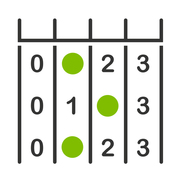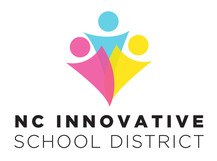
Board Sets Ambitious Goals for NC Public Schools 2025 Strategic Plan
The State Board of Education adopted a five-year strategic plan at its August meeting aimed at ensuring that all students in North Carolina receive a sound, basic education by having the state’s education system focus on three critical goals, all centered around equity and “whole-child” elements:
- Eliminate opportunity gaps by 2025
- Improve school and district performance by 2025
- Increase educator preparedness to meet the needs of every student by 2025
Each of the three overarching goals includes measureable objectives, outlined below, intended to allow the board and state’s schools to track their progress in delivering on the strategic plan’s promise.
“This might be called the State Board of Education’s strategic plan, but it’s really the North Carolina public school system’s strategic plan,” Chairman Eric Davis said. “This plan is a way to guide decisions; to guide implementation of policy and state law as well as influence policy and state law. These issues matter and are in the forefront for every teacher in North Carolina.
“Four hundred years of history have produced a terrific nation – a great economic force and society,” Davis said. “But it’s also created tremendous gaps in market forces that inhibit the ability of our students to succeed. This is our intentional effort to push back on those forces and do things that will create necessary change so that every student in North Carolina gets the education that we know they need and deserve.”
“We’ll have succeeded if we get to the point where there are no discernable differences in academic achievement of our students across racial, ethnic, geographic, economic or any other factors.”
Deanna Townsend-Smith, the board’s director of operations and policy, reminded members that the final plan represented the culmination of a months-long process that began in October 2018 with a long list of priorities before being narrowed to the three major goals.
“While this work was hard,” Townsend-Smith said, “the hard work truly begins” as education leaders begin engaging with partners across the state to move the plan forward.
Board member James Ford, the co-chairman of the board’s Strategic Planning Committee, emphasized the plan’s focus on equity, which he said for educational systems is a “recognition that gifts and talents are distributed fairly equally, but opportunity is not.” The plan, he said, is intended to help correct those imbalances by “implementing interventions that take into account that differentiated distribution of opportunity and builds a system that recognizes that. What we’re really doing is equalizing opportunity.”
Matthew Bristow-Smith, the 2019 North Carolina Wells Fargo Principal of the Year who serves as an advisor to the board, said he believes the plan will resonate with schools and districts across the state in their own planning efforts.
“There is a clarity and salience to these three major goals that will make alignment with district and school plans so much easier,” Bristow-Smith said. “All three goals speak to major initiatives that every LEA in our state care about and are working towards.”
|
Goal I - Eliminate opportunity gaps by 2025
- Objective 1 - Decrease the number of exclusionary discipline practices by subgroup (suspensions and expulsions)
- Objective 2 - Improve school climate measures across all schools and grade levels
- Component 1 - Increase the number of school-based mental health professionals.
- Component 2 - Increase opportunities to develop healthy habits in students
- Component 3 - Increase the number of schools and districts utilizing innovative "Breakfast After the Bell, Summer Meals, and At-Risk Afterschool Meals" programs to keep students fed, healthy and engaged
- Objective 3 - Increase percentage of 4-year old children enrolled in state Pre-K from 22% to 34% (above the current national average)
- Objective 4 - Decrease the high school dropout rate for each subgroup
- Component 1 - Increase average composite score on state-mandated college entrance exam
- Component 2 - Increase access, readiness, and attainment of early postsecondary opportunities (EPSOs), such as AP, IB, CTE, dual credit/enrollment, work-based learning, apprenticeships
- Objective 5 - Decrease number of students taking remedial courses in college
- Objective 6 - Increase the number of educators of color in schools across North Carolina
- Objective 7 - Increase the number of charter schools providing equitable access to economically disadvantaged students or reflecting the LEA in which they are located
Goal II - Improve school and district performance by 2025
- Objective 1 - Allocate financial, business and technology resources according to State and Federal laws and State Board of Education policies
- Objective 2 - Increase the percentage of grades 3-8 math and ELA EOG subgroup test scores meeting the ESSA Yearly Measures of Interim Progress
- Objective 3 - Increase the percentage of students proficient in math by subgroup
- Objective 4 - Increase the percentage of students proficient in reading by the end of 3rd grade
- Objective 5 - Increase the percentage of high school reading subgroup test scores meeting the ESSA Yearly Measures of Interim Progress
- Objective 6 - Increase the percentage of students proficient in science by subgroup
- Objective 7 - Increase number of schools meeting or exceeding growth measure by subgroup
- Component 1 - Increase the percentage of schools with charter-like flexibilities (Innovative Schools, Innovation Zones, Restart Schools, Renewal School Districts, Lab Schools) meeting or exceeding annual expected growth
- Objective 8 - Increase the number of charter schools meeting or exceeding academic, operational, and financial goals
Goal III - Increase educator preparedness to meet the needs of every student by 2025
- Objective 1 - Increase the number of culturally-relevant, equity-focused resources for educators
- Objective 2 - Increase the number of mentors available to beginning educators
- Objective 3 - Strengthen relationships between educator preparation programs (EPPs), districts, and schools to foster collaboration and better teaching practice
- Objective 4 - Increase opportunities for educator engagement inside and outside of school

Board Approves New Achievement Levels for Math Assessments
With this past year’s administration of new and shorter math assessments, the State Board approved revised achievement levels for the year-end exams. Instead of the previous five levels that had been in place for the last five years, achievement on the new assessments will be based on four levels.
Accountability Director Tammy Howard told the board that the new exams were developed to reflect new mathematics content standards the State Board adopted for grades 3 through 8 in 2017 and for high school courses in 2016. To align what is measured to what is taught, new mathematics tests were implemented in the 2018–19 school year. Howard explained that the new tests required setting new expectations for students.
The new levels essentially collapse the previous levels 1 and 2 into a single “not proficient” level, with the other three achievement levels – 3, 4 and 5 – indicating performance ranging from “sufficient” understanding to “comprehensive” understanding.
Several board members expressed concern with labeling students as “not proficient” and asked that a different, more positive, name be used instead. Board members reached no decision on the issue, but agreed to revisit the issue.
Achievement level descriptors:
Level 5 – Students at Level 5 demonstrate comprehensive understanding of grade-level content standards, are on track for career and college, and are prepared for advanced content at the next grade/course.
Level 4 – Students at Level 4 demonstrate a thorough understanding of grade-level content standards and are on track for career and college.
Level 3 – Students at Level 3 demonstrate sufficient understanding of grade-level content standards though some support may be needed to engage with content at the next grade/course.
Not Proficient -- Students who are Not Proficient demonstrate inconsistent understanding of grade-level content standards and will need support.
|

Board Learns about Rowan-Salisbury District's Renewal District Effort
Board members heard an update on the progress of the Rowan-Salisbury school district in applying the charter-like flexibility that it was granted by the General Assembly last year.
Lynn Moody, superintendent of Rowan-Salisbury schools, told board members that they sought flexibility as the state’s first and only “renewal” district to shift what she said was an overemphasis on testing to teacher-led designs of curriculum that focus on fundamental skills that students need to succeed after graduation.
“Standardized testing orders and sorts children in a way that is economically biased,” Moody said. “It’s not the best way to measure what a child knows and is able to do.”
She said that teachers in individual schools are instead focusing on developing curriculum and instruction that focuses on “real-life problem solving instead of work sheets and throw-away work.”
As a renewal district, Rowan-Salisbury has also been granted budget flexibility so that it receives state funds in one lump sum, rather than in multiple restricted funds, Moody said, allowing the district to use its funds in a way it considers best to support students.
She explained that the district has adopted a student-centered “directional system” that puts equal emphasis on three critical components of academic skills, interpersonal skills and unique life goals.
|

Board Raises Concerns About Innovative School District
With Southside Ashpole Elementary School in Robeson County entering it’s second year under the supervision of the state’s Innovative School District, the board received an update from James Ellerbe, recently appointed superintendent of the district.
Several board members expressed concerns about teacher absenteeism at the school last year as well as Achievement for All Children, the charter organization under contract with the state to run the school.
Board member Olivia Oxendine said teacher attendance is critical to the school’s success and student achievement. “When teachers are there, kids learn. We need teachers present.”
Board member J.B. Buxton voiced his support for Ellerbe and the newly named principal, Kenneth Bowen, but he said he has less confidence in the charter operator for the school.
“I’m looking for assurance that we have an operator who can operate a school for kids who we’ve decided need more support than any others in the state,” Buxton said. “If we’re expanding [the district to include additional schools], what do we need to do to recruit high quality operators who can hit the ground running and have turned around low-performing schools with these kinds of characteristics.”
State Superintendent Mark Johnson said that the Innovative School District should be a last resort for schools after other turnaround efforts have proven unsuccessful.
“The Board has also been working very well to build out a system where instead of the current legislative requirement for putting a school into the ISD,” Johnson said, “we’re exploring is there a system where we could help struggling schools get them off that list and then eventually – if all the supports don’t work – then ISD is the answer.”
“It’s important that the Board knows that we’ve been working with the General Assembly to put that into legislation, and we’re having promising conversations to do that.”
Johnson said also that he’s told the legislators that he wants to put a “pause” on schools being added to the ISD until they’ve improved the selection process.
“This is about making sure schools have the supports before they eventually end up in the ISD, which would be a last resort,” he said.
|
|